Assessing the antimicrobial effects of various metals on E. coli growth
Abstract
On a daily basis, individuals’ hands come into contact with numerous objects, such as door knobs, handrails, bank ATMs, and bathroom fixtures. These items also provide a surface for bacteria and germs to grow and be transmitted from person to person. Many of these surfaces are made of stainless steel, aluminum, and brass. Recently, the copper industry has begun promoting the antimicrobial benefits of copper, which is found in significant portions in the alloy brass. This project sought to find if any other metals possessed similar properties, and, if so, how they compared to copper. Specifically, the key questions behind this analysis was: Are there metals that, by themselves, can be effective in fighting germs? The project measured bacterial growth over a period of time for different types of materials, including 12 metals and a species of wood. Washer-shaped samples of each material were placed into petri dishes inoculated with E. coli bacteria. Control tests were also performed in petri dishes without any sample material. The petri dishes were then randomly placed throughout an incubator, where they were kept for approximately 48 hours. Control variables included the testing chamber used, temperature of the testing chamber, amount of bacteria swabbed on the petri dish, test time, and approximate size of tested metals. Results showed that while experimentation supported the idea of antimicrobial copper, nickel-plated brass demonstrated antimicrobial properties that were far superior to any other metals. It was also found that stainless steel and aluminum were among the most ineffective materials, exhibiting no antimicrobial properties. This research suggests that switching from using steel to using nickel-plated brass on touch surfaces would have a significant, positive effect both economically and medically.
Independent Variable
Material tested: Aluminum, brass, bronze, cherry wood, chrome-plated steel, copper, nickel (400), nickel-plated brass, painted steel, silver, stainless steel, titanium, zinc and yellow chromate-plated steel
Dependent Variable
Percentage of washer inner diameter that is bacteria free after 48 hours; Percentage of washer 3-mm outside diameter that is bacteria-free after 48 hours
Controlled Variables
Type of bacteria (E. coli), testing chamber used, temperature of testing chamber, amount of bacteria swabbed on petri dish, test time, approximate size of tested metals
Photo Gallery
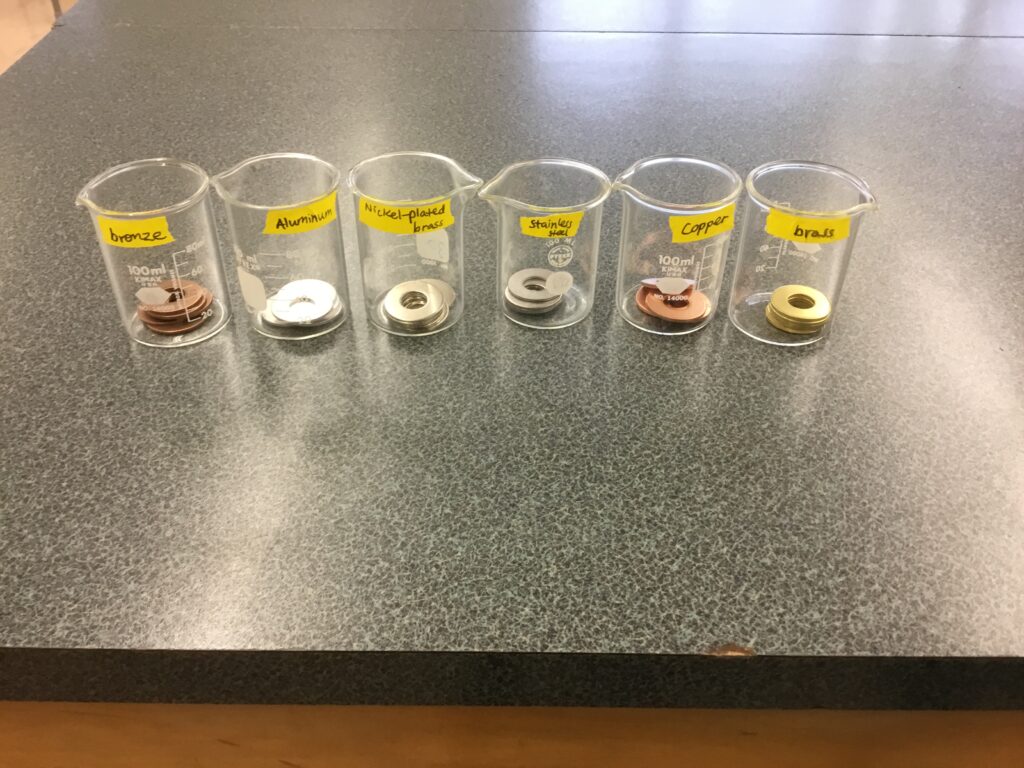
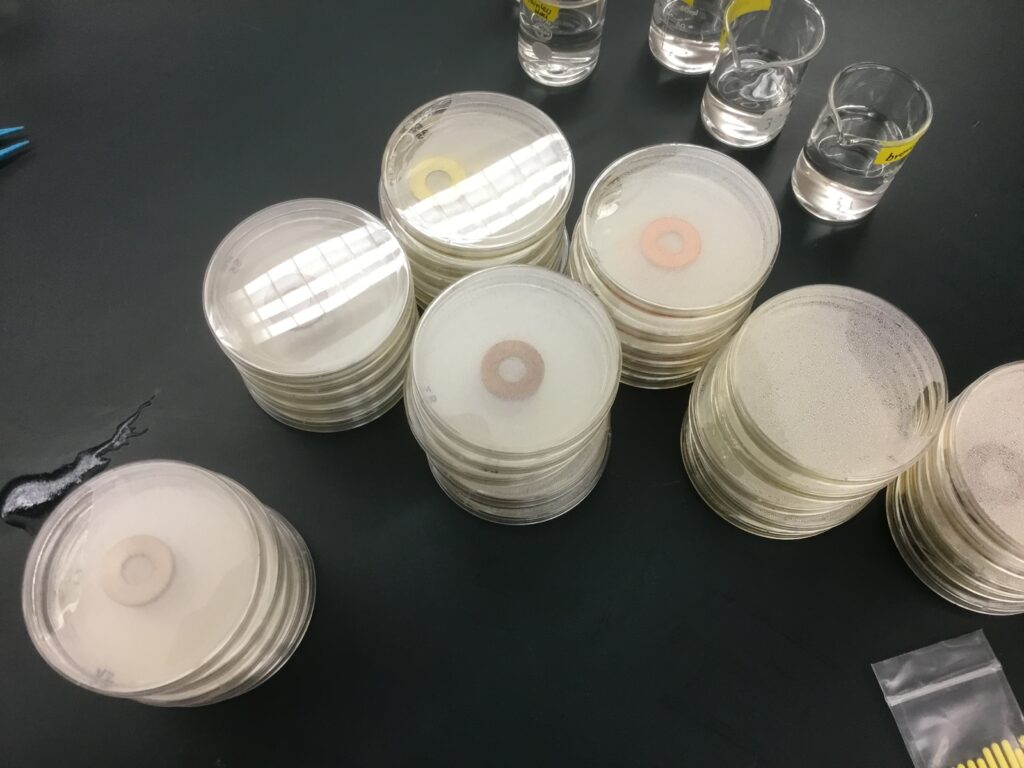
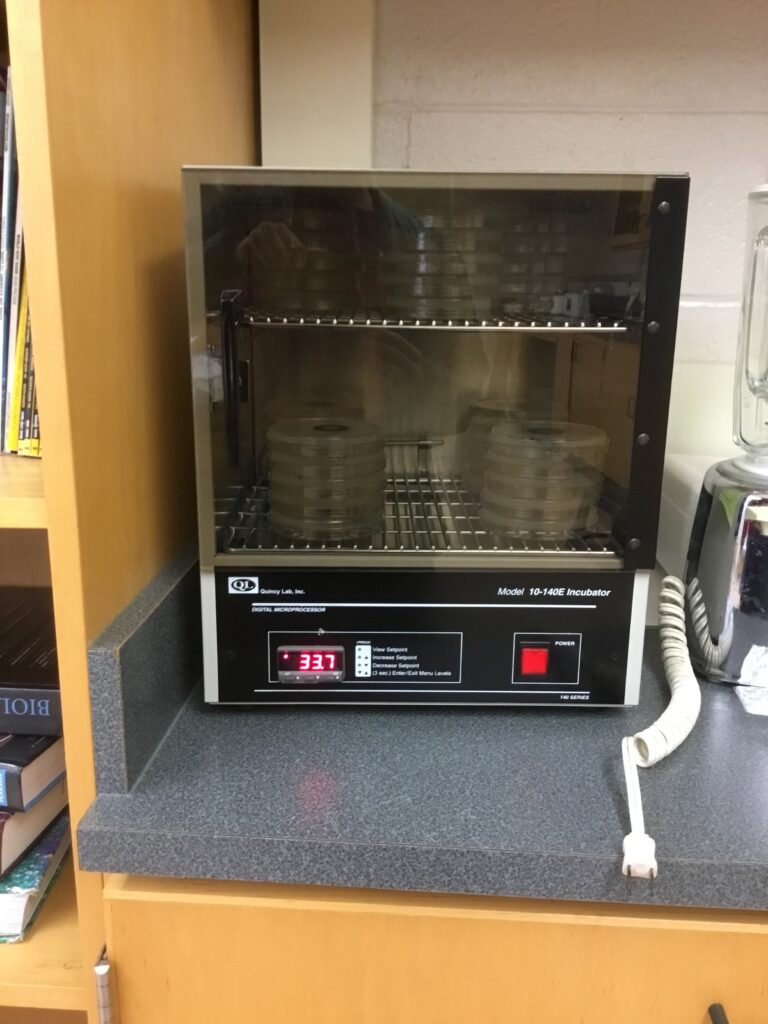
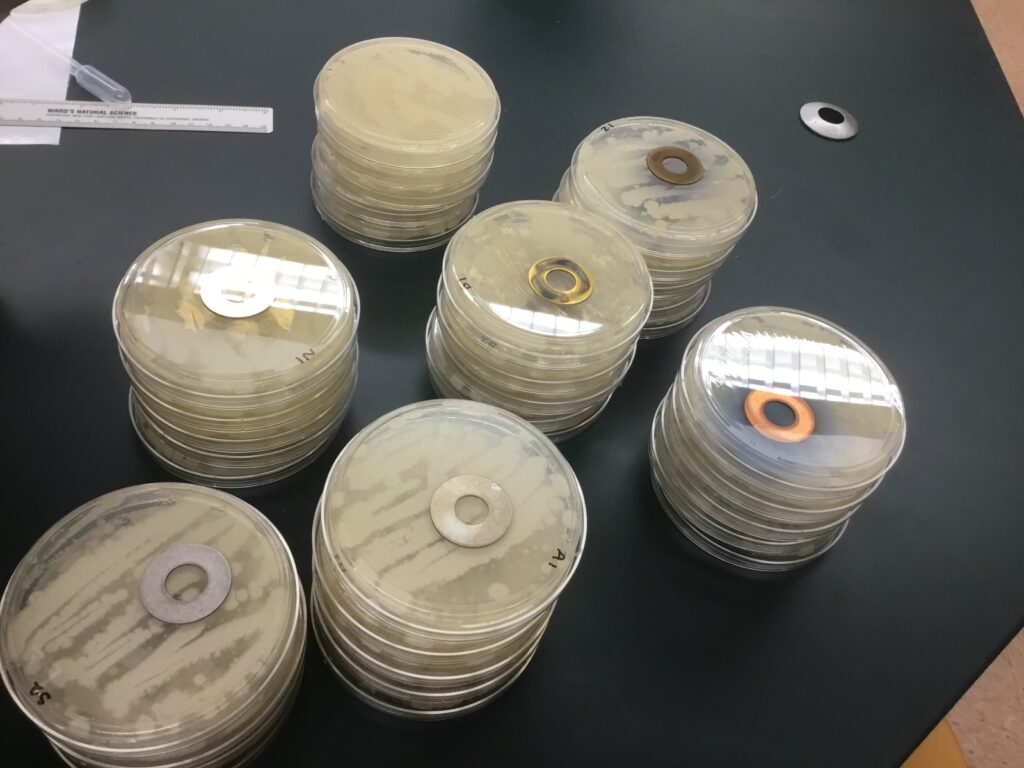
Data Collection
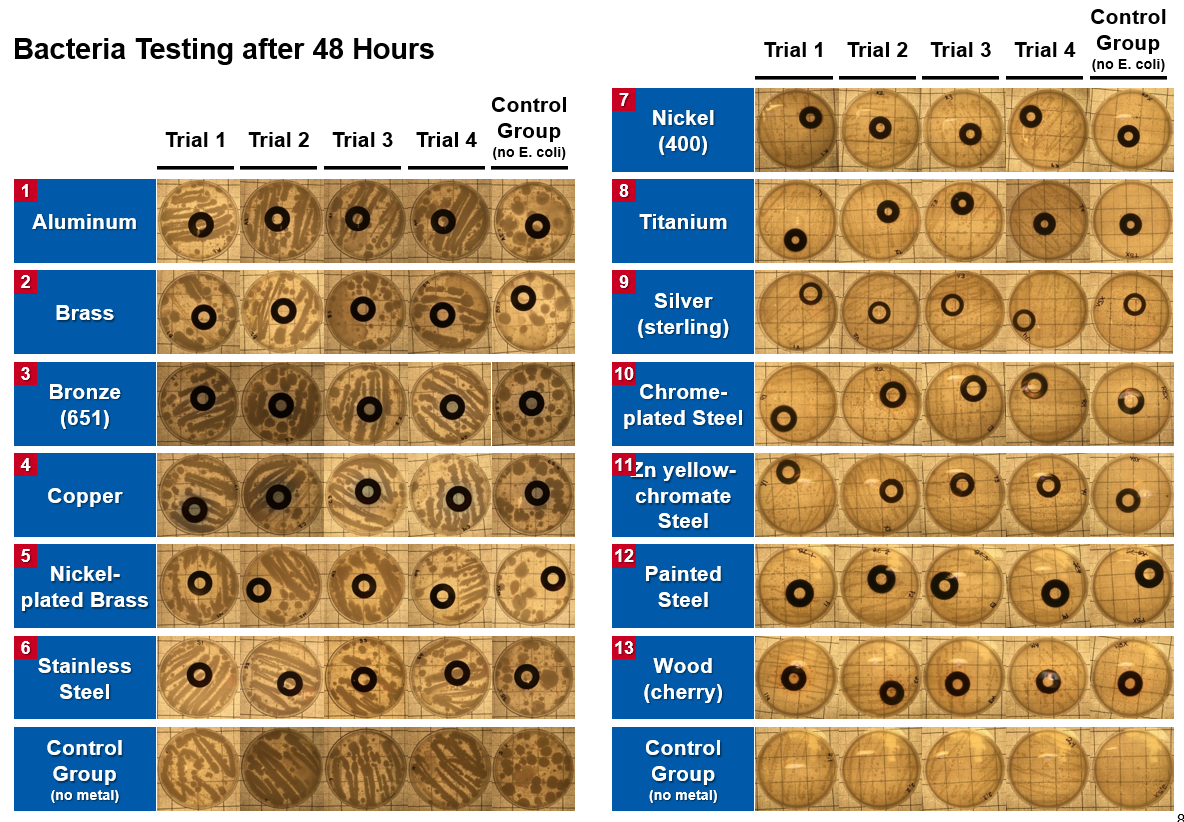

Results
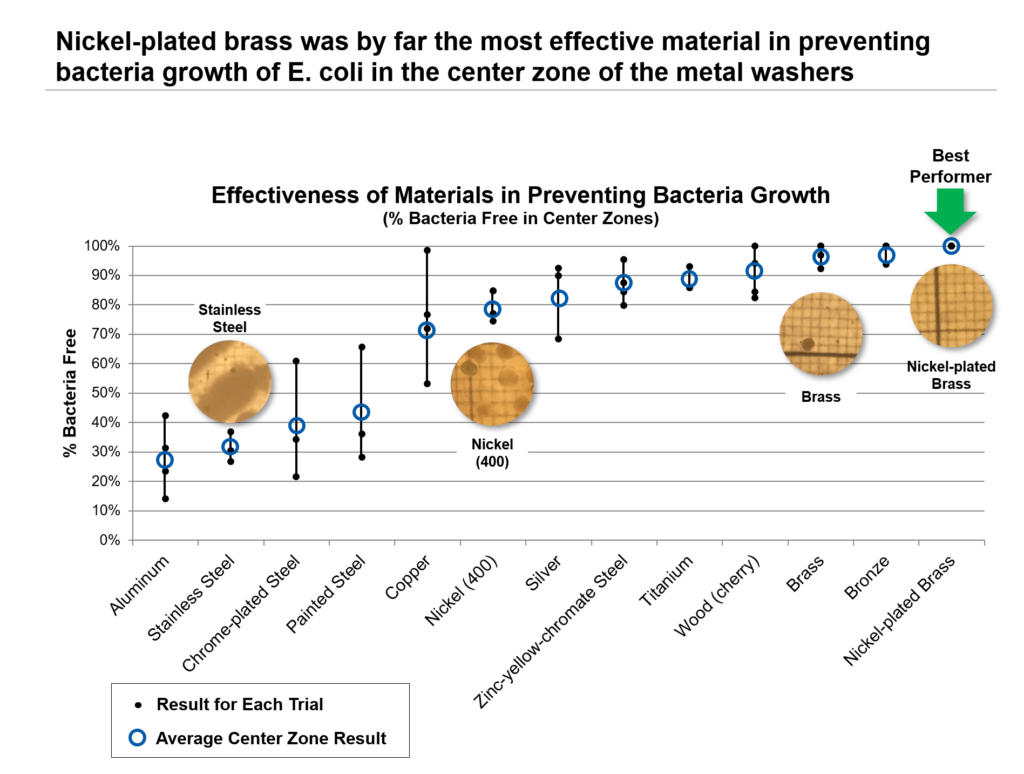
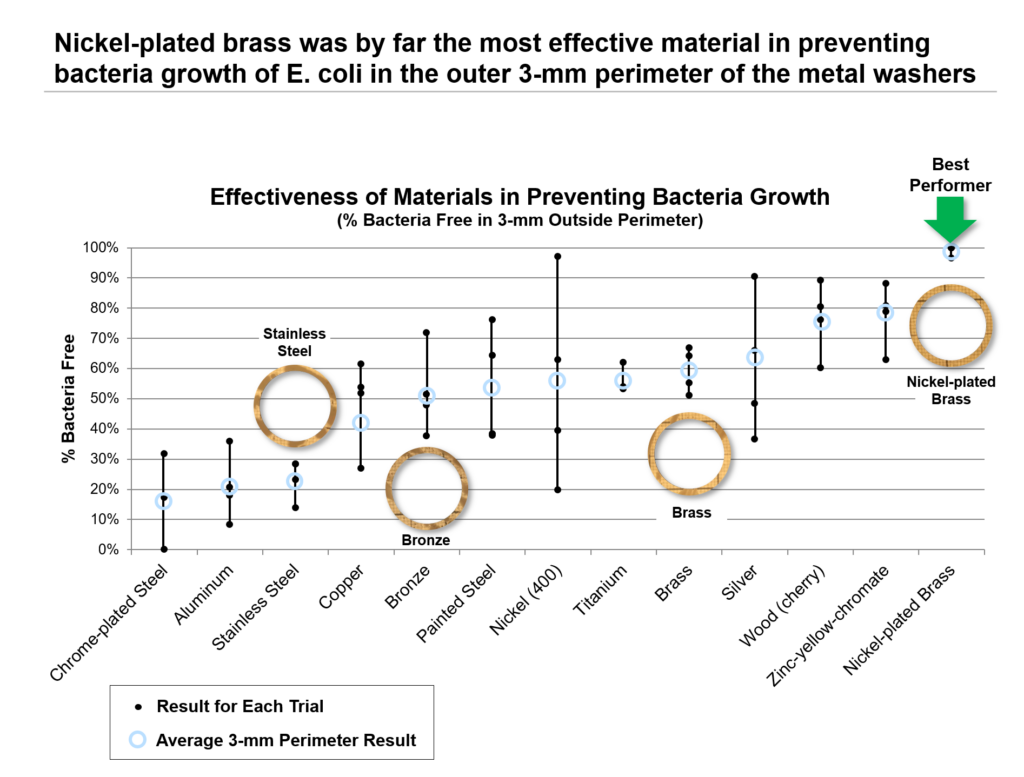
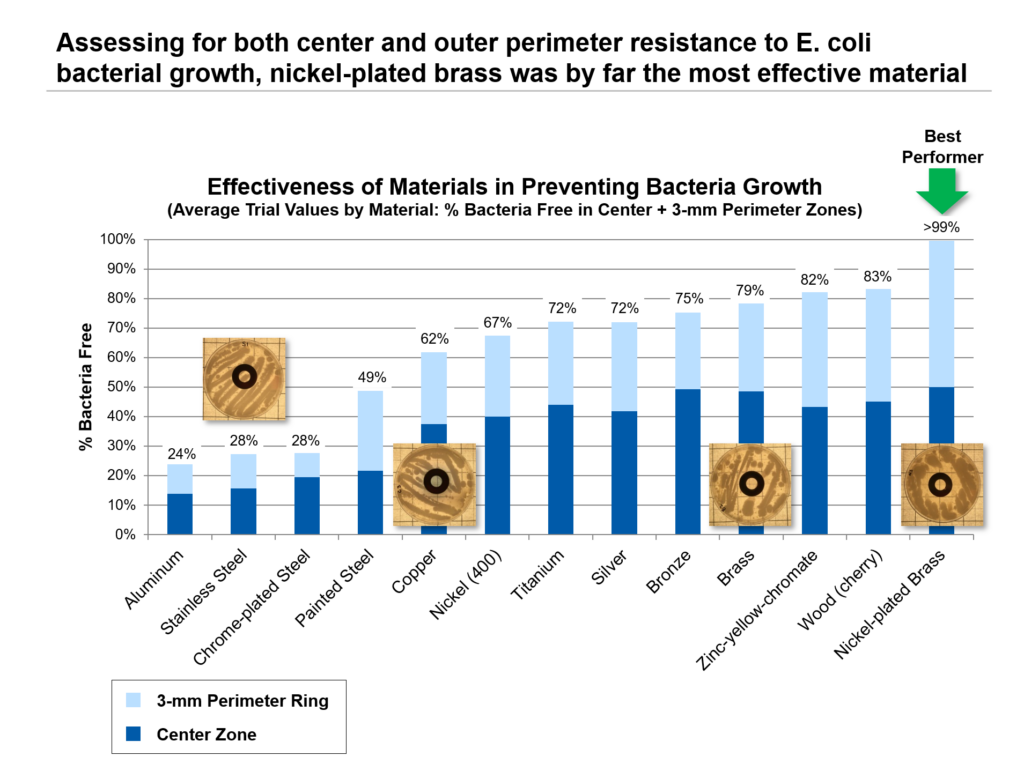
Conclusion: Key Takeaways
• Copper and copper alloys demonstrated antimicrobial properties.
• Copper and bronze exhibited a bluish-green oxidation throughout the center and perimeter areas.
• Nickel-plated brass demonstrated antimicrobial properties far superior to other materials tested.
• Despite silver being known to possess anti-microbial properties, nickel-plated brass significantly outperformed silver in these tests.
• Steel, aluminum, and chrome did not inhibit E. coli growth.
• Nickel-plated brass inhibited E. coli growth more than 3mm away from metal sample.
The Case for a Material that Fights Microbes
Annual cost of the Flu and Common Cold in the U.S.
>31 million doctor visits
>$10B in medical expenses
>200,000 hospitalizations
>$24B in lost wages
Between 3,000 & 49,000 deaths
>$100B in “total economic burden”
History Forgotten
• Egyptians used copper over 6000 years ago to sterilize wounds
• Due to purchasing cost considerations over the past 50 years, steel and plastics have largely replaced copper alloys for door knobs, handles, railings, buttons, and levers in public spaces
